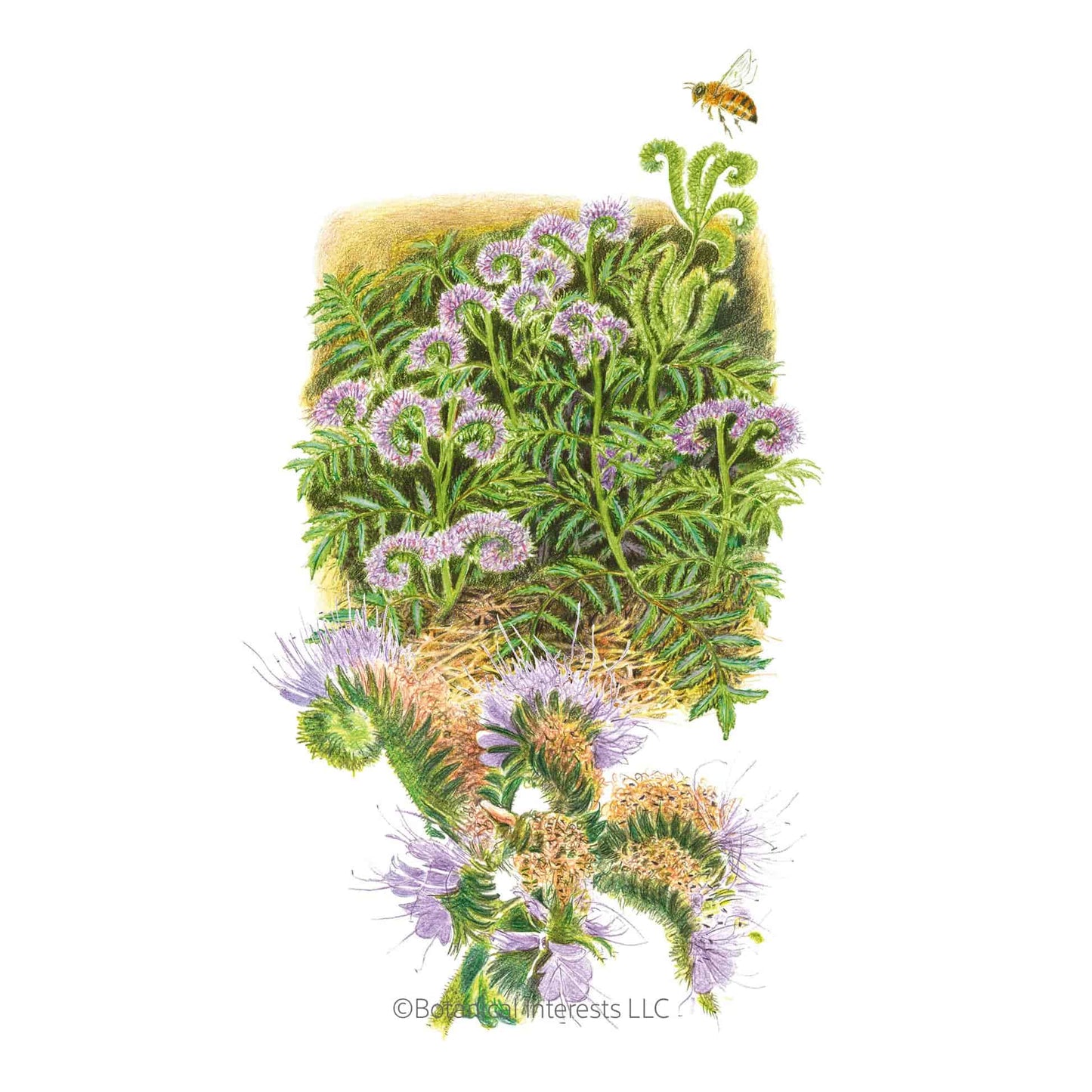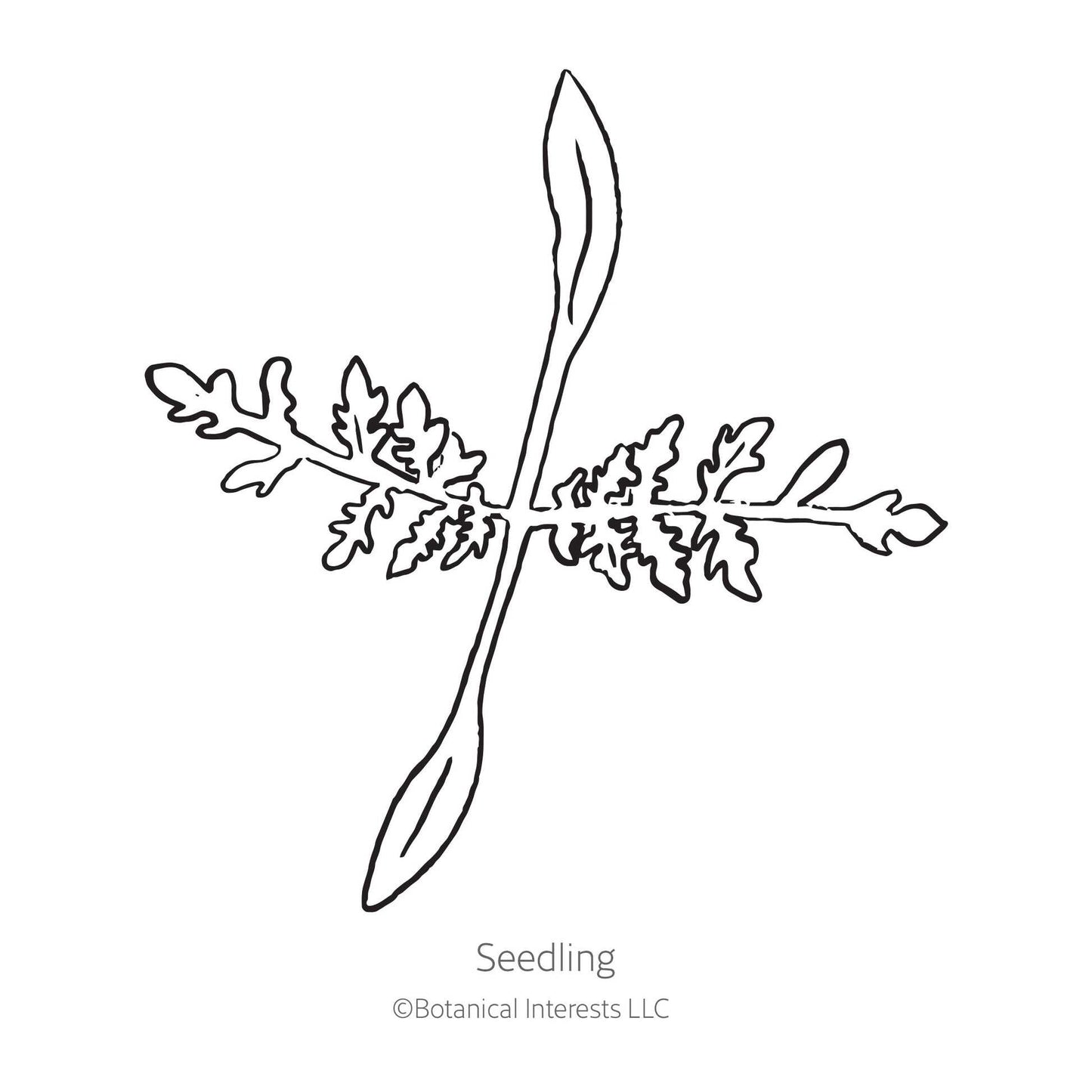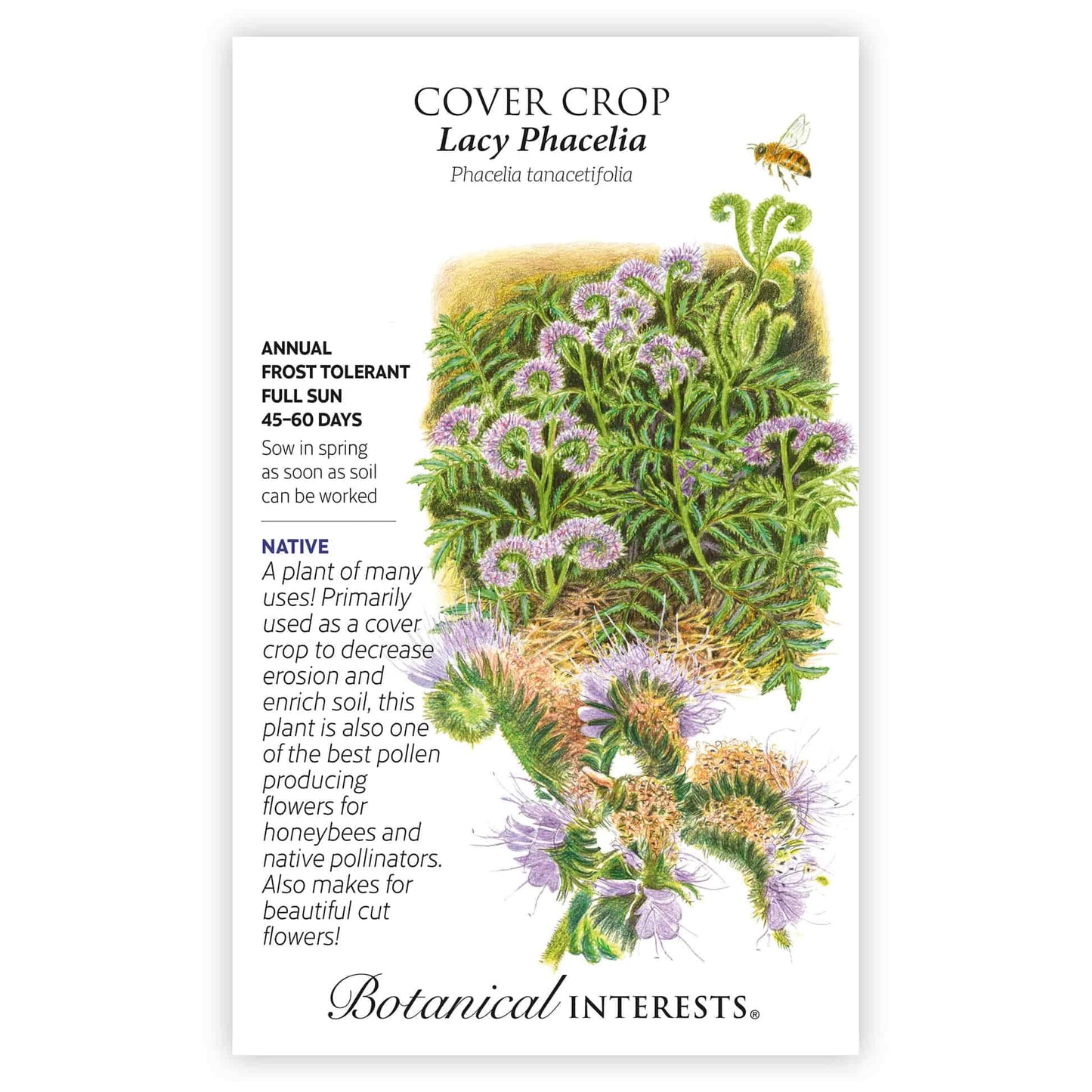


- Variety Info
- Sowing Info
- Growing Info
Variety Info
Days to Maturity: 45-60 days, annual
Family: Hydrophyllaceae
Native: Arizona, California, and northern Mexico
Hardiness: Frost-tolerant annual. Hardy to 19°F. Winter kills at 18°F; if using as winter cover, leave organic matter in place to prevent soil erosion.
Exposure: Full sun
Plant Dimensions: 12"-36" tall
Variety Info: Erect and semi-erect stems covered with short stiff hairs. Small, violet, bell-shaped flowers occur in fiddlehead clusters that unfold as the plant continues to bloom. Plants can cause minor skin irritation in sensitive individuals.
Attributes: Frost Tolerant

Sowing Info
When to Sow Outside: RECOMMENDED. In spring, sow as soon as the ground can be worked. Germination takes place when soil temperatures are between between 40°F and 68°F. Extreme high and low temperatures inhibit germination. Darkness is required for germination, so fully cover seeds with soil. In fall, start 8 weeks before your expected first frost to reach plant maturity.
When to Start Inside: Not applicable.
Days to Emerge: 15-30 days
Seed Depth: 1/4"
Seed Spacing: Scatter seed about 2" apart
Row Spacing: Not Applicable
Your hardiness zone is
Growing Info
Harvesting: Before they set seed, cover crops should be incorporated into the soil or removed. Dig up the plants and turn under or use a tiller. If you want to speed the decomposition process, mow the crop first to cut the plants into smaller pieces. Cover crops decompose in the soil rather quickly; in just 2 to 4 weeks after incorporation, you can sow your next crop. If you choose not to incorporate the cover crop into your soil right away, add the cuttings to your compost pile. As they break down, they give the compost the same enriching benefits to be added to your garden soil later. You can use cover crops as mulch, too. As mulch, the plants break down more slowly, but still add the benefits of soil-moisture retention, wind erosion reduction, and insulation, which keeps the soil warm or cool. To use as mulch, cut plants down to the soil by hand, mower, or weed whacker.




